This is a quick tour of some of Easy Data Transform's features. It should only take a couple of minutes to complete.
Start Easy Data Transform. If the Free Trial window appears, click Continue free trial. If the Getting Started window appears, click I have used it before! (or you will just end up back on this page). You should now see the main window.
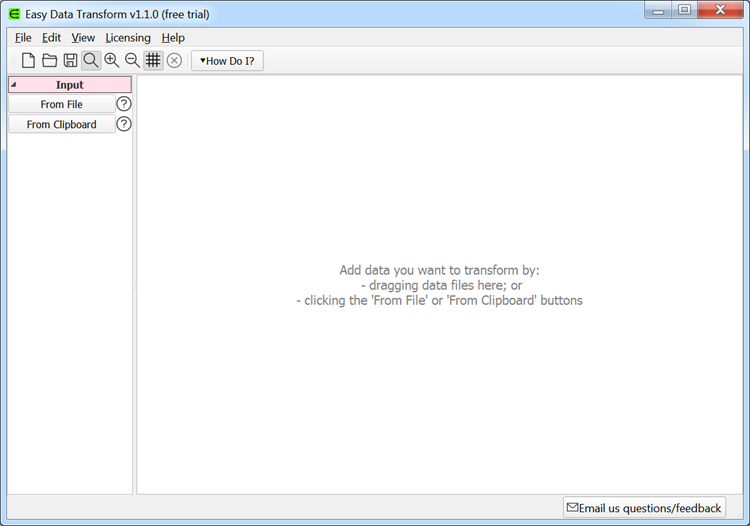
Drag a data file you want to transform onto Easy Data Transform. Any sort of table or list should be fine. For example a .csv file or an Excel .xlsx/.xls file.
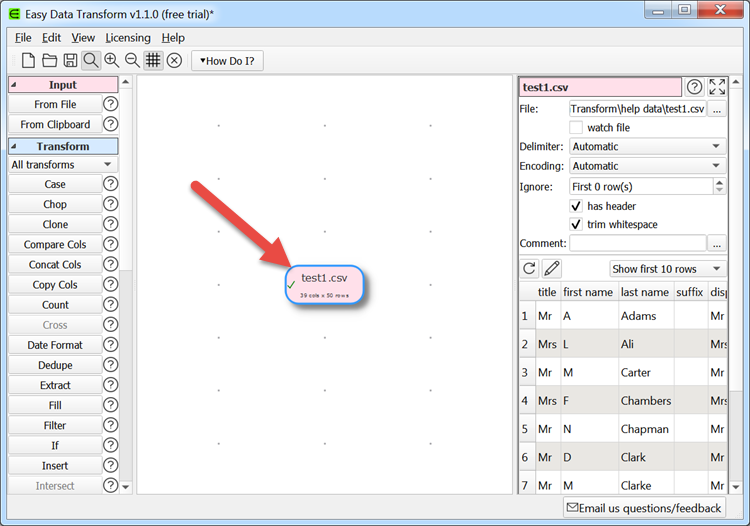
Notice that the available transforms are shown in the Left pane and the selected dataset is shown in the Right pane.
In the Right pane, you can check has header, depending on whether you want to treat the first row of the dataset as a header.
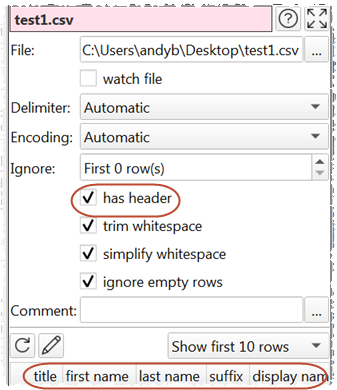
All the transforms available for a single dataset are now enabled in the Left pane. Hover over the transforms to see tooltips explaining what they do. Click on the ? next to a transform button for more details.
Ensure the input item is selected and click on the Case transform button to change the case of your data.
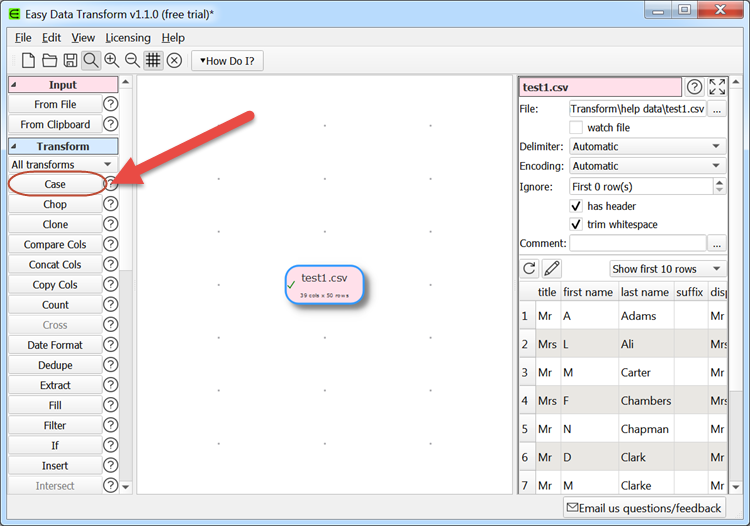
A Case transform item will now be added.
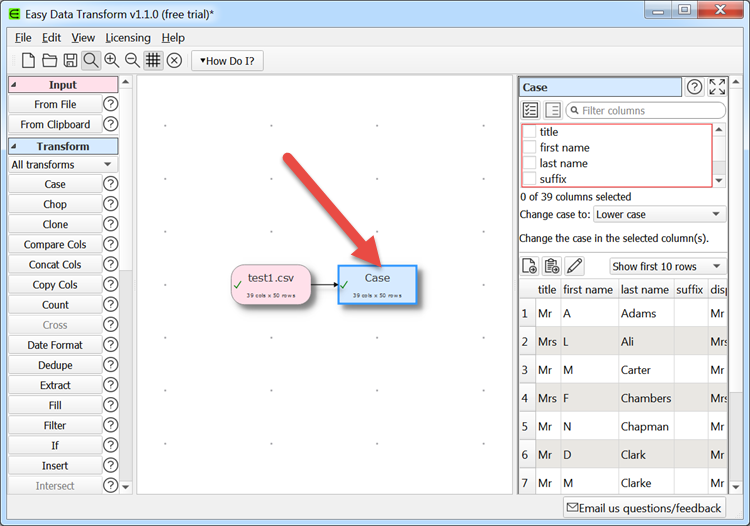
In the Right pane, check one of the columns and set Change case to to Upper case. All the text in that column will now be converted to upper case.
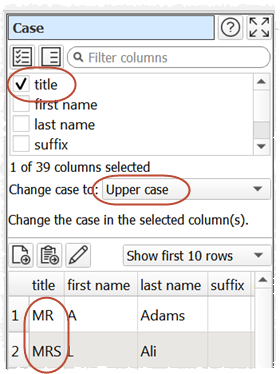
You can create a sequence of transforms to perform complex manipulations.

Some transforms require more than one input dataset. For example, to stack two tables, one on top of the other:
•Select File>New to start again. Don't save the changes.
•Drag two data files onto the Center pane.
•Select both input items (by dragging a box around them or using Cmd+click).
•Click the Stack transform button (you may need to scroll the Left pane to see the button).
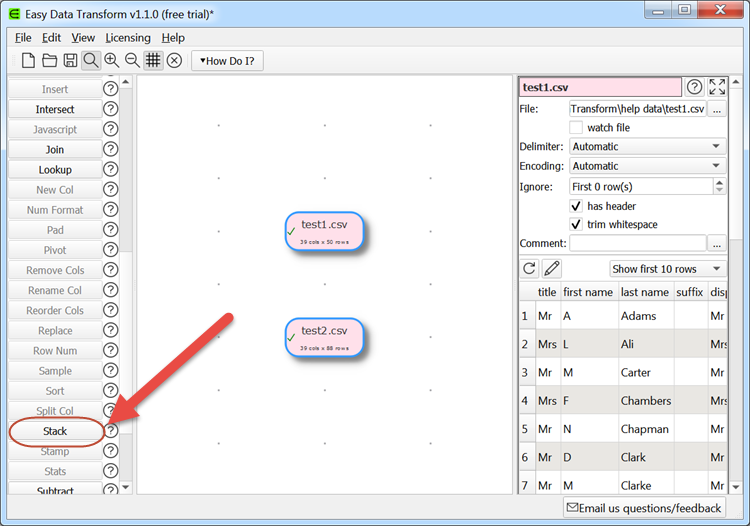
The tables are now stacked one on top of the other in a new dataset item. You can choose to match the columns by Header name or Column number.
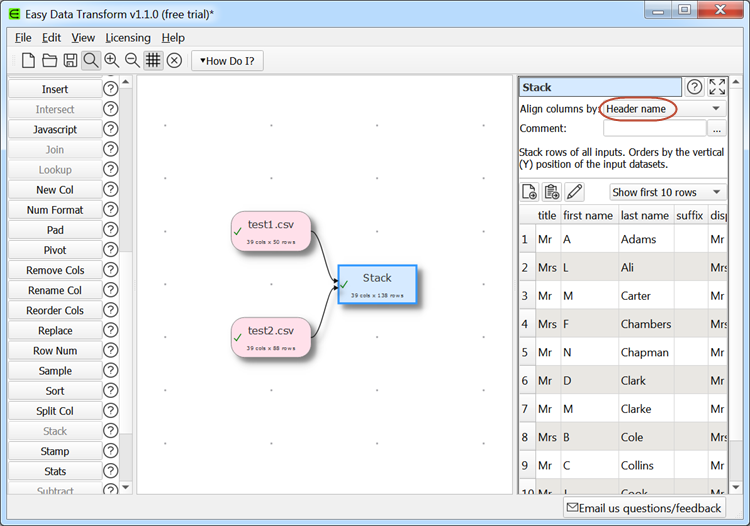
Note that the vertical (Y) position of the inputs affects the order the datasets are stacked. Try swapping the two inputs around and re-select Stack to see the affect.
Any changes to input files will be automatically read in. Any changes to input datasets or transform options will be automatically propagated 'downstream'.
To export your transformed dataset to a file or the clipboard, or to view it in a local editor, select the dataset item and click on the appropriate button in the Right pane.
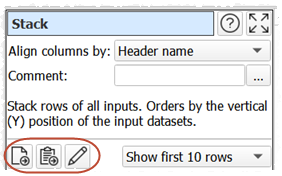
You can also add an output item to automatically write a dataset to file whenever it changes.
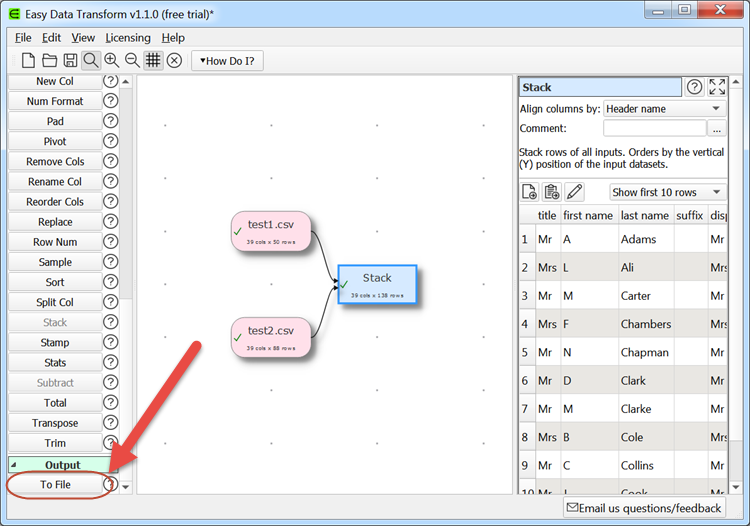
You will be asked for a file to write to. You can choose amongst multiple file formats. Select CSV file.
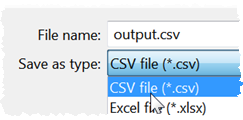
Your dataset will then be written to this file every time it changes.
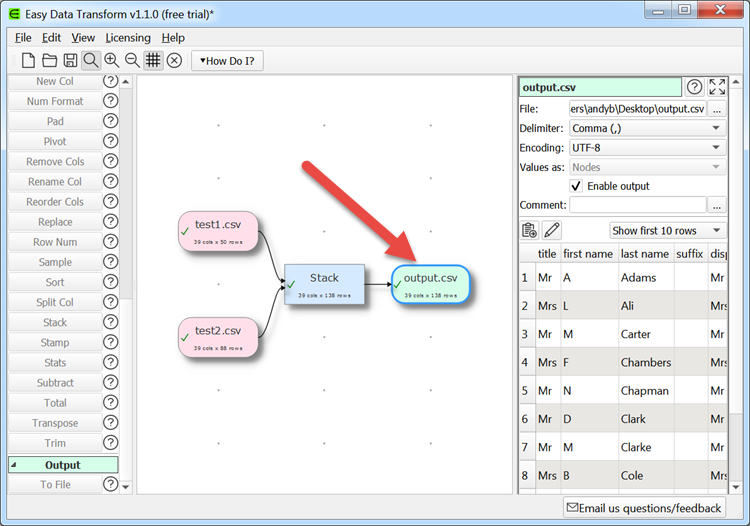
You can also specify the delimiter and encoding for your CSV files in the Right pane.
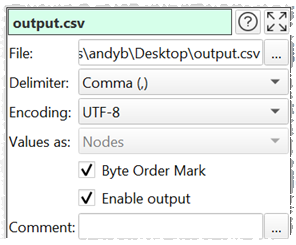
You can save your transforms to use again with File>Save.
Have a play!
Tips:
•You can also paste in data from the clipboard (for example, a table from a web page).
•The Compare cols, Filter, If and Sort transforms take account of dates, numbers and text. You can define what date formats to recognize in the Preferences window.
•New columns are always added to the right of a table.
•Comparisons of text are always sensitive to case. For example, "CASE", "case" and "Case" are treated differently.
•Comparisons of text are always sensitive to whitespace (e.g. spaces and tabs). You can use the Trim transform to remove leading and trailing whitespace.
•The contents of input data files are not saved in Easy Data Transform.
•As well as stacking two datasets, you can also Join them, side-by-side, if they have a common ('key') column.
We are very interested in your feedback, so please contact us to ask a question, report a bug or request an enhancement.